Thursday 25 – Saturday 27 May 2017
Accommodation: Aurum International Hotel, booked on booking.com. CNY 640.90 for a double room for two night (excluding breakfast).
A hectic city
Our main motivation for going to Xi’an was to see the Terracotta Warriors, which are located 26 miles from the city. I’d done a little research and found that the population of Xi’an is only 8.7 million. We were travelling from Beijing, with a population of 21.5 million so were expecting a smaller, quieter city. After our first day I commented to David that it felt a lot busier. We were in the lead up to the Dragon Boat Festival holiday so we thought this might be the cause. However, I searched online for the population density of Xi’an and it is about four times that of Beijing! I knew that China would be a busy place and I’m glad it was only Xi’an which lived up to those expectations as it was so hectic.
Sleeper train
We decided to get a sleeper train from Beijing to Xi’an, which would save us losing a day to travelling (high speed rail is around 4.5-6 hours) and also save us the cost of a night’s accommodation. Plus, we had never been on a sleeper train before so wanted to experience it. We used The Man in Seat 61 (great for train info all over the world) for information and followed his advice to use China Highlights to book our tickets a few months in advance.
We booked a Superior Soft Sleeper on the Z19 train, which left Beijing at 20:40 and arrived in Xi’an at 08:31 and cost US$259. For another part of my journey, I used Ctrip to book a train which was really easy and in hindsight, I could probably have booked the sleeper tickets directly through this instead of going through a 3rd party. However, I would recommend China Highlights if you want some help and they were very good at refunding my cousin’s money when she had to cancel her trip to China, as the tickets hadn’t been bought yet.
As we bought Superior Soft Sleeper tickets, we had our own private cabin on the train. The cabin had bunk beds, a small table, an armchair and a small en suite with toilet and sink. It was all very basic but comfortable.
As I’d had prior experience with train food in China, we loaded up on snacks and drinks before boarding. There are hot water taps available on trains so instant noodles is an easy choice. I’m sure there was a food carriage available on the train if you want to buy something and there were also people standing on the platform selling drinks etc, before the train left Beijing.
Rocked gently to sleep by the movement of the train, I had a good sleep and woke up refreshed when someone knocked on our door to empty our bin at about 8am. I think this is just to ensure everyone is awake before arrival. David, however, couldn’t sleep at all because of the train noise and movement so we had to allow time for him to have some sleep before exploring Xi’an!
If you can sleep on trains and are short on time, I’d recommend considering travelling by sleeper trains in China.
Arriving in Xi’an
After a long wait in the train station’s taxi queue, we got a taxi to our hotel with a policeman helping to direct the taxi driver. As we had arrived so early, I’d been worried that we wouldn’t be able to get into our hotel room and have a shower but this never seems to be a problem in China and we were able to check in on arrival.
After David caught up on his sleep, we went out in search of food. It was a lot more difficult to find menus that we could understand in Xi’an than it had been in Beijing. It was also a time between lunch and dinner which probably didn’t help and we found ourselves in a Chinese Pizza Hut.
City Walls
Xi’an was originally a walled city and the city walls still frame the centre of the town. The total distance around the wall is 13.7km and it is 12 meters high. One thing I was keen to do in Xi’an was cycle the city walls so we went to hire bikes and work off our pizza.
As Xi’an was so busy, I was happy to discover that you have to pay to get up to the City Wall as I had expected it to be a free place for people to walk. It is CNY 45 per person and then you can either walk around or pay to hire bikes. The wall is a square and there is a bike hire shop at the centre of each side. These are all owned by the same company so you can pick up a bike at one place and drop it off elsewhere on the wall. This came in handy when we realised that we would only have time to cycle half way around.
I can’t remember the price of bike hire but it is CNY 40/bike for 1.5 hours according to China Highlights. There is also the option of renting tandem bikes but David wasn’t keen on my vision of a romantic tandem cycle around the wall. He clearly saw through my plan of chilling at the back while he did all the work.
As well as the bike shops, there are also some shops selling drinks, snacks etc so there’s plenty of places to pick up a bottle of water if you forget, as we did. I had read somewhere online that the bikes were very uncomfortable but we didn’t find this. The paving on the wall is large cobble stones which was quite bumpy to cycle over so you might end up with a sore bum.
We really enjoyed cycling around the wall and seeing Xi’an from the top of the wall. It is interesting to see the old style buildings inside the wall and the new, skyscrapers on the outside.
There were some signs and photos of Michelle Obama visiting the City Walls in 2014 and I have just discovered that she has a blog post about her visit! I’m in good company blogging about my trip to China!!
Xi’an Bell Tower
The Bell Tower, marks the very centre of China’s ancient capital of Xi’an. As with the Bell Tower in Beijing, it is near to a Drum Tower and the two were once used to tell the time. In ancient times, the bell ringing signalled morning and drumming signalled night falling. Now, the bell tower functions as a giant roundabout with heavy traffic constantly driving around it.
We paid to go up the bell tower, had a quick look around the exhibition before climbing up to the top floor. The building itself is impressive and the painted ceiling is almost psychedelic but I mainly enjoyed watching the busy traffic whiz by, amazed at how busy Xi’an was. I was also watching out for the birds which were sweeping about really close to the tower.
Both the Bell Tower and the Drum Tower look very impressive lit up after dark.
Muslim Food Street
Xi’an was the starting point of the Silk Road and people went to the city for business and study from Arabic countries resulting in a Muslim Quarter. As it started to get dark, we walked to the Muslim Food Street, which was very close to the Bell Tower.
Xi’an in general was busy but the Muslim Food Street was perhaps the busiest place in all of the world! It’s actually a few intersecting streets and we walked around in a loop to go in and out of the area at different points.
Although I’m glad we took a walk through the area, I can’t say we enjoyed it all that much. As I say, it is so so busy and we shuffled through with the crowds. Also, as vegetarians, there wasn’t really anything on offer to eat. We expected this and only went to see the famous streets. If you are a vegetarian/vegan and really offended by meat, I’d recommend avoiding the area altogether. There’s carcasses hanging around being butchered and the smell in places is horrific (not sure if that was from the stinky tofu).
The smell wasn’t helped by the garbage truck we found ourselves stuck behind, which was emptying all the bins! It was disgusting and noisy and every time we overtook the truck, it popped up behind us, beeping loudly to get through.
So – worth a look for the experience and if you’re a meat lover but be prepared for the crowds!
Terracotta Warriors
On our second day in Xi’an, we went to visit the Terracotta Warriors Museum. As with visiting The Great Wall, we decided to try to get there by public transport instead of spending a future on a private driver or tour. As with The Great Wall, it was super easy so I’d definitely recommend using public transport unless you’re really short on time. Using instructions from Travel China Guide, we got a taxi to the train station and then got a bus to the entrance of the museum. The buses were clean, comfy, had air conditioning and took just over an hour.
The terracotta warriors were ordered to be built by built for Emperor Qin Shi Huang, the first emperor of China. The emperor started construction of the Terracotta Army in 246BC when he was just 13. The army was to accompany the emperor into the afterlife.
The Terracotta Warriors were only discovered in 1974 when a group of peasants (who I hope are now rich) were digging for a well. Archaeologists have been working at the site since, excavating the area, which covers 16,300 square meters. Over 7,000 life sized statues of soldiers, horses, chariots and weapons have since been discovered and no two are the same, each with unique features and facial expressions. Over 40 years later, excavation of the site of Qin Shi Huang’s mausoleum is still ongoing. Most of it remains unearthed so there may be a lot more warriors to be excavated. It has been a UNESCO World Heritage site since 1987 and is considered to be one of the greatest discoveries of the 20th century.
My first thought was what a complete waste of time and money based on the demands of a 13 year old. However, the Terracotta Warriors must now provide a lot of money to China as they attracted over 5 million visitors in 2015. Hopefully the farmers who first discovered the site got a cut! Be warned though, if you think you meet the farmers at the museum and they want to sell you a signed book, they’re likely fakes!
Arriving at the museum car park, you pass through stalls selling food, drinks and what looked really like cat furs but I’m hoping it wasn’t. You then arrive at the ticket office, buy tickets and go through entry gates into the museum grounds. From the entrance, there is a walk of 15 minutes to the actual exhibitions. The museum is in lovely parkland with green hills around, which was nice after spending time in the manic city centre. There were shuttles available to taxi you if you’d prefer not to walk.
The museum is made up of various buildings – the statues and exhibitions are all indoors. A few are exhibition halls – one for weapons and one for chariots and horses – where the artifices are on display in glass cases. There were also photos from the last 40 years since the site had been discovered. We had a wander through these, shuffling along with the crowds.
Then there are three pits/vaults – 1, 2 and 3. Pit 1 is by far the biggest and the one you will have seen photos of. There are almost 2,000 warriors on display here and the scale of the site is very impressive. Pits 2 and 3 are much smaller but interesting as you can see where the archaeologists are still working. The smaller pits also had some displays providing more information on the soldiers such as the clothing they wore which indicated their rank.
After we had visited all the pits and exhibitions, we headed for the exit, passing through an area with some restaurants, Starbucks, Burger King etc. There are some places to eat within the museum area but I imagine they’re expensive and low quality. After a Starbucks break and some more walking, we eventually found ourselves back at the car park. There was a packed bus just leaving and we decided to wait for the next one to get seats together as they are so frequent.
I saw a website warning that visitors might be disappointed by the Terracotta Warriors. I wouldn’t say I was disappointed and I’m glad we made the trip but I was a little underwhelmed. I expected entering the largest pit to be a ‘wow’ moment (like we’d had getting to the top of The Great Wall a few days before) but I’ve seen so many photos of the site and it was similar to what I had expected.
Although I wouldn’t put it on par with Beijing or Shanghai, Xi’an is definitely worth a visit, especially if the Terracotta Army is on your bucket list. The walled city centre is quite small so it’s easy to walk from place to place and we only used taxis to get to the train station which is outside the walls. We found that a lot less people spoke English than the bigger cities so be prepared with a good translation app to help! Also, be prepared for extreme busyness while walking around as there are just SO many people. Although very frustrating at times, I found it quite fascinating to watch the traffic and people rushing around from the Bell Tower.
Also handy to know – it’s pronounced ‘shee-ann’!
Check out my other Chinese blog posts on arriving in China, Shanghai, Tianjin, Beijing, Pingyao and what to expect in China.
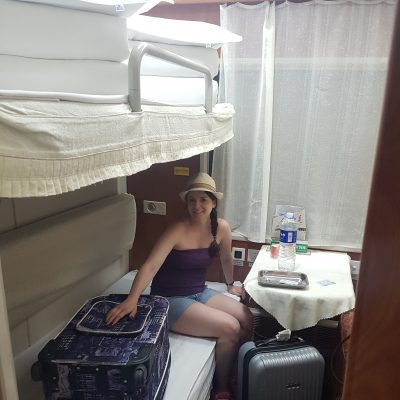
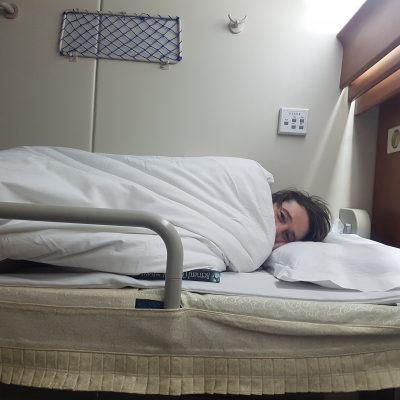

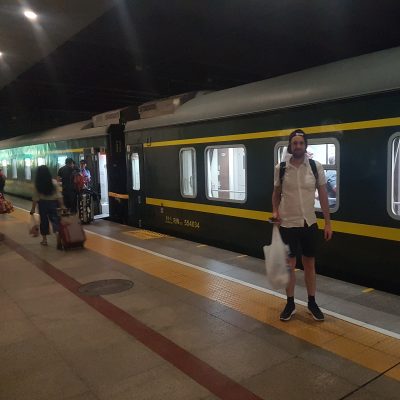
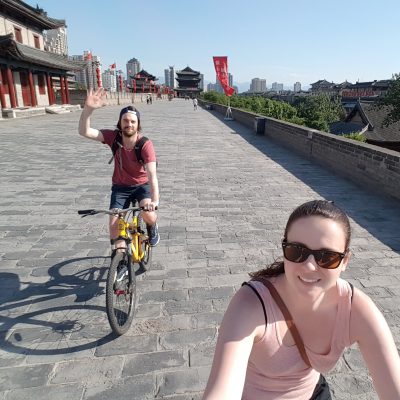
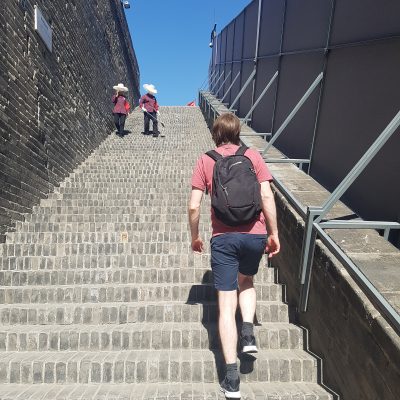
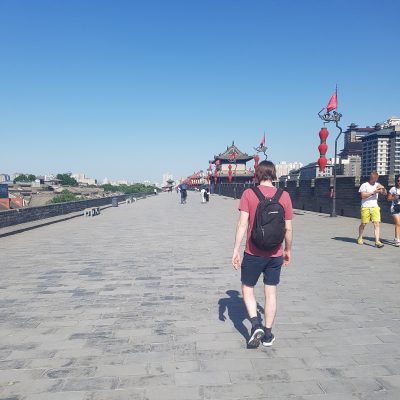
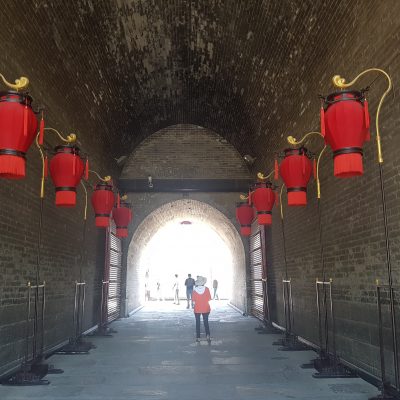
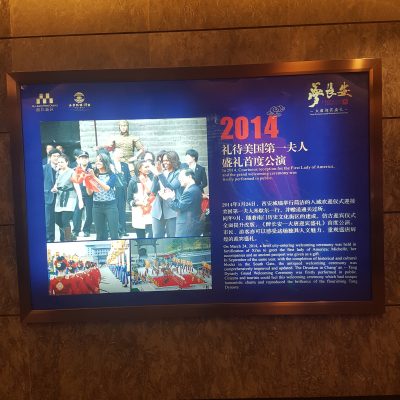
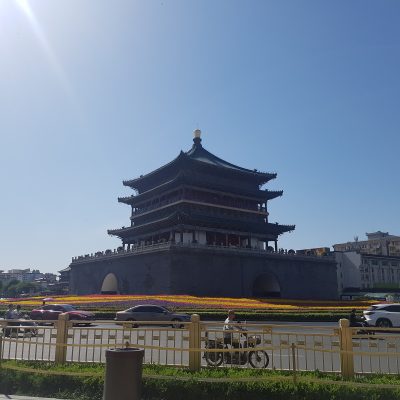
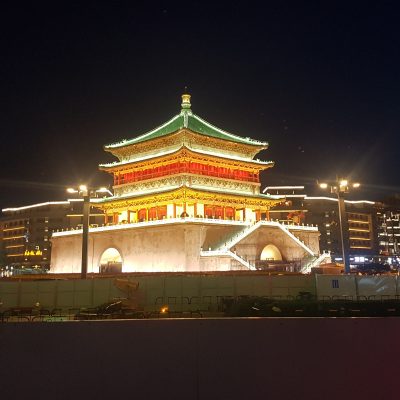
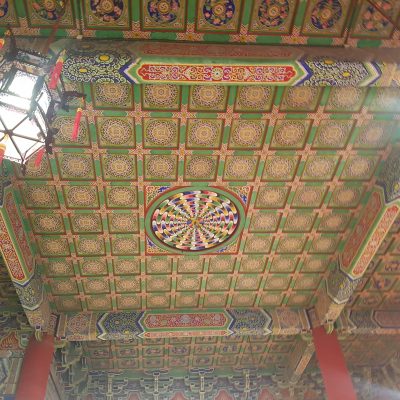
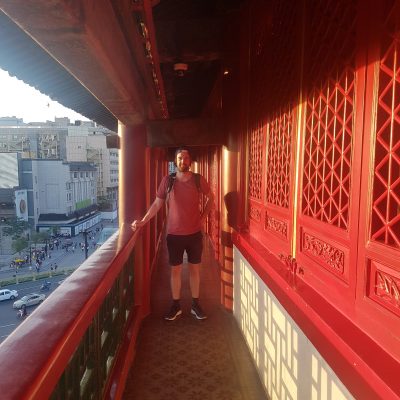
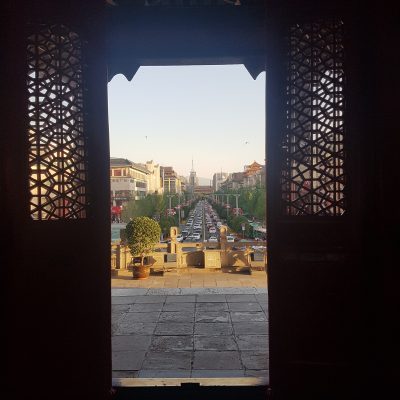
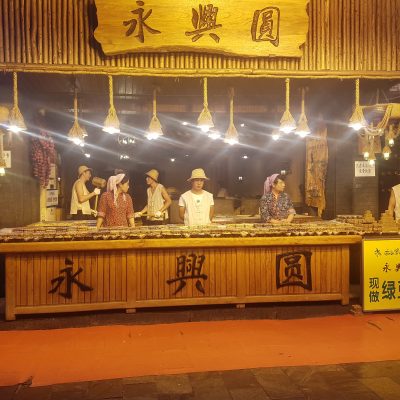
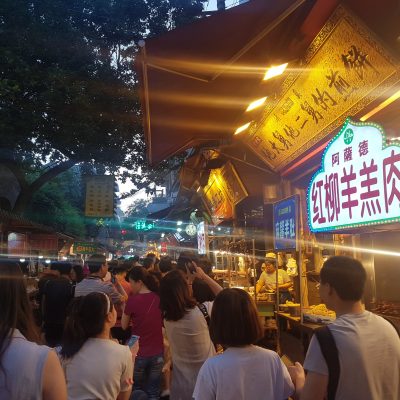

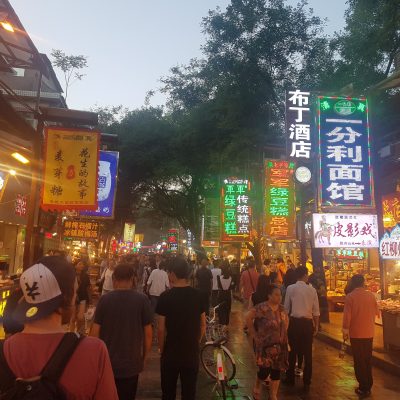
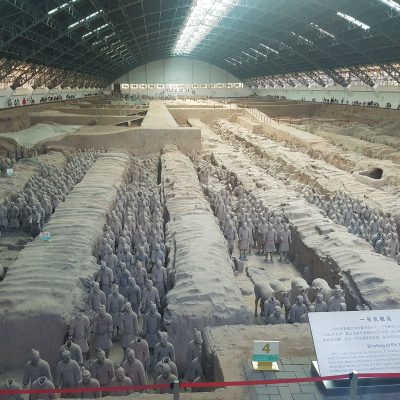
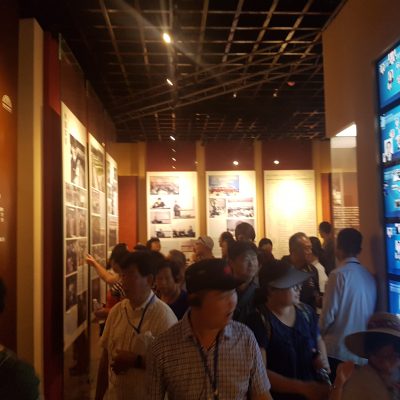
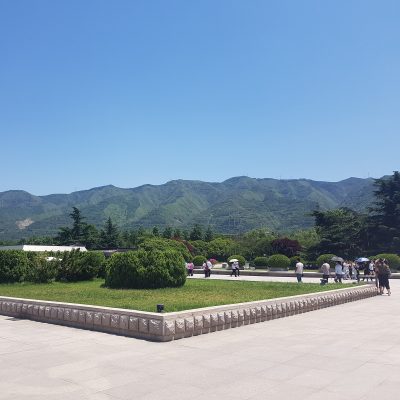
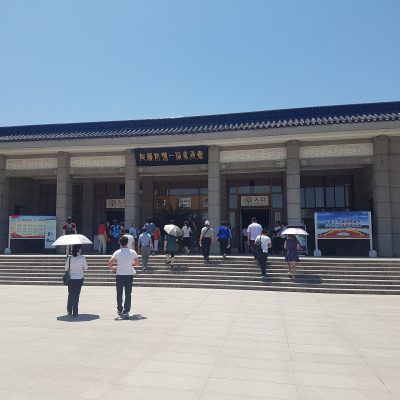
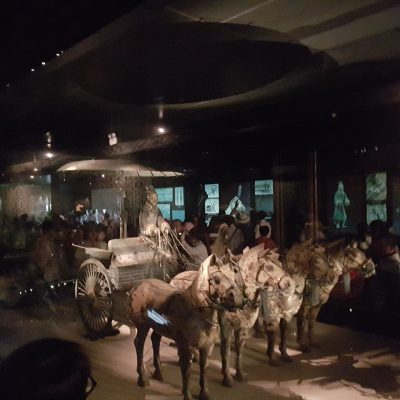
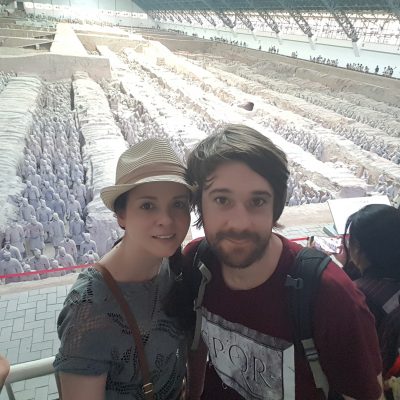
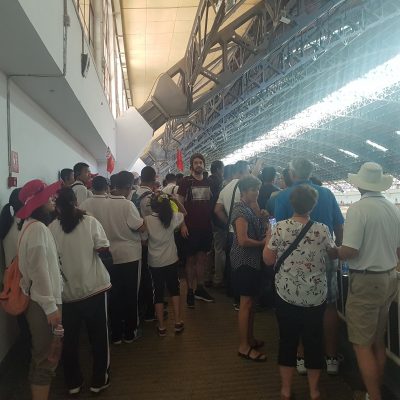
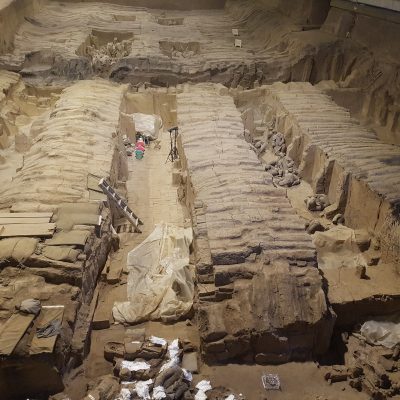
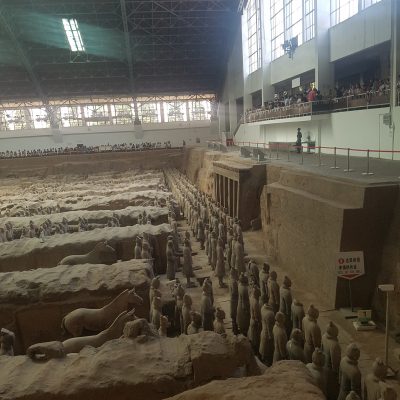
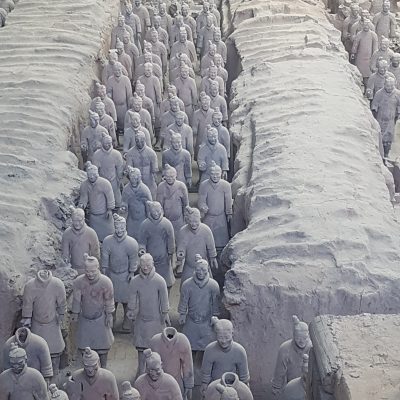
Pingback: Sì (Beijing) – BoldTraveller